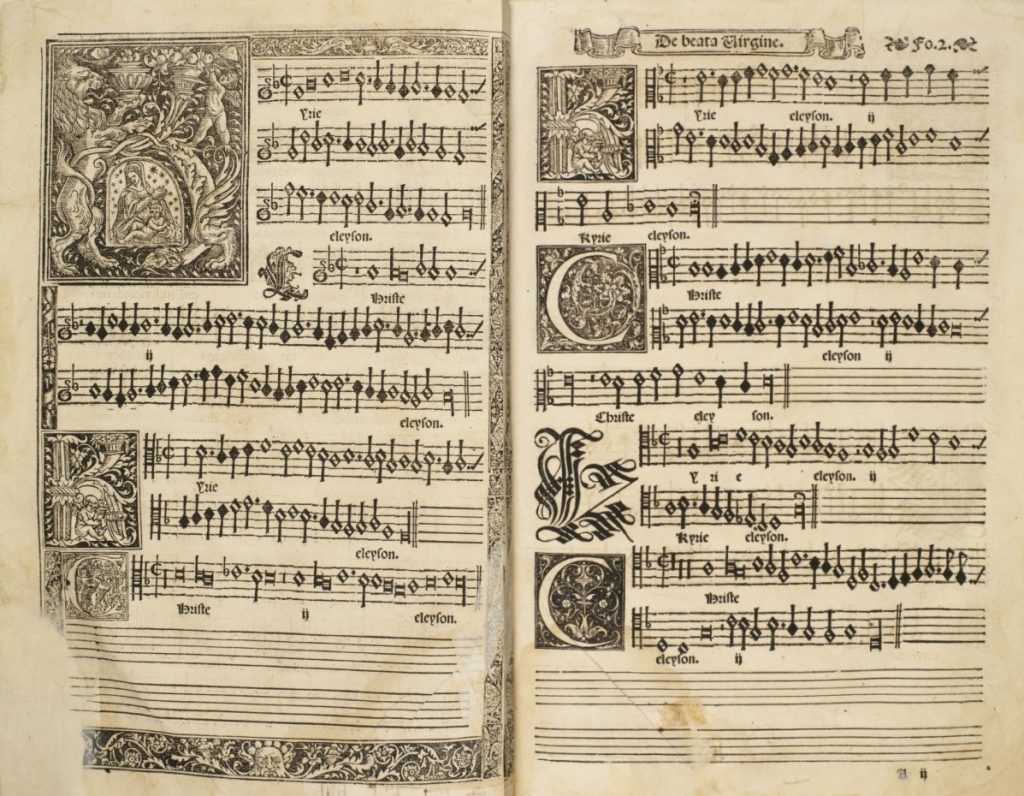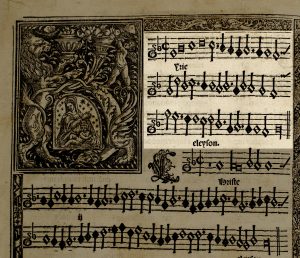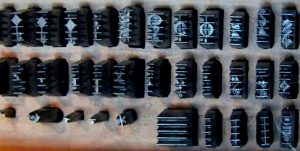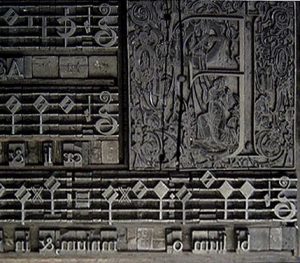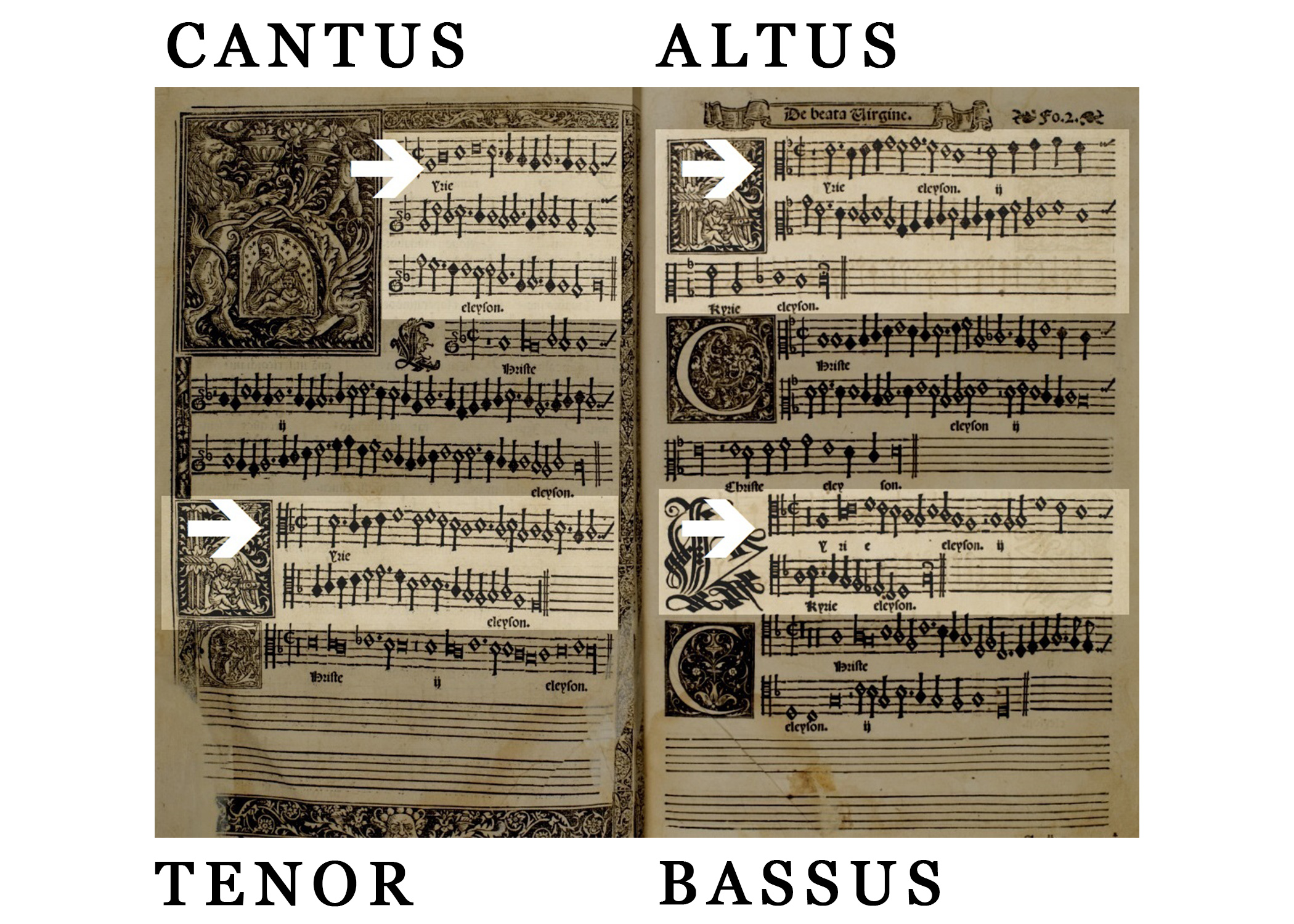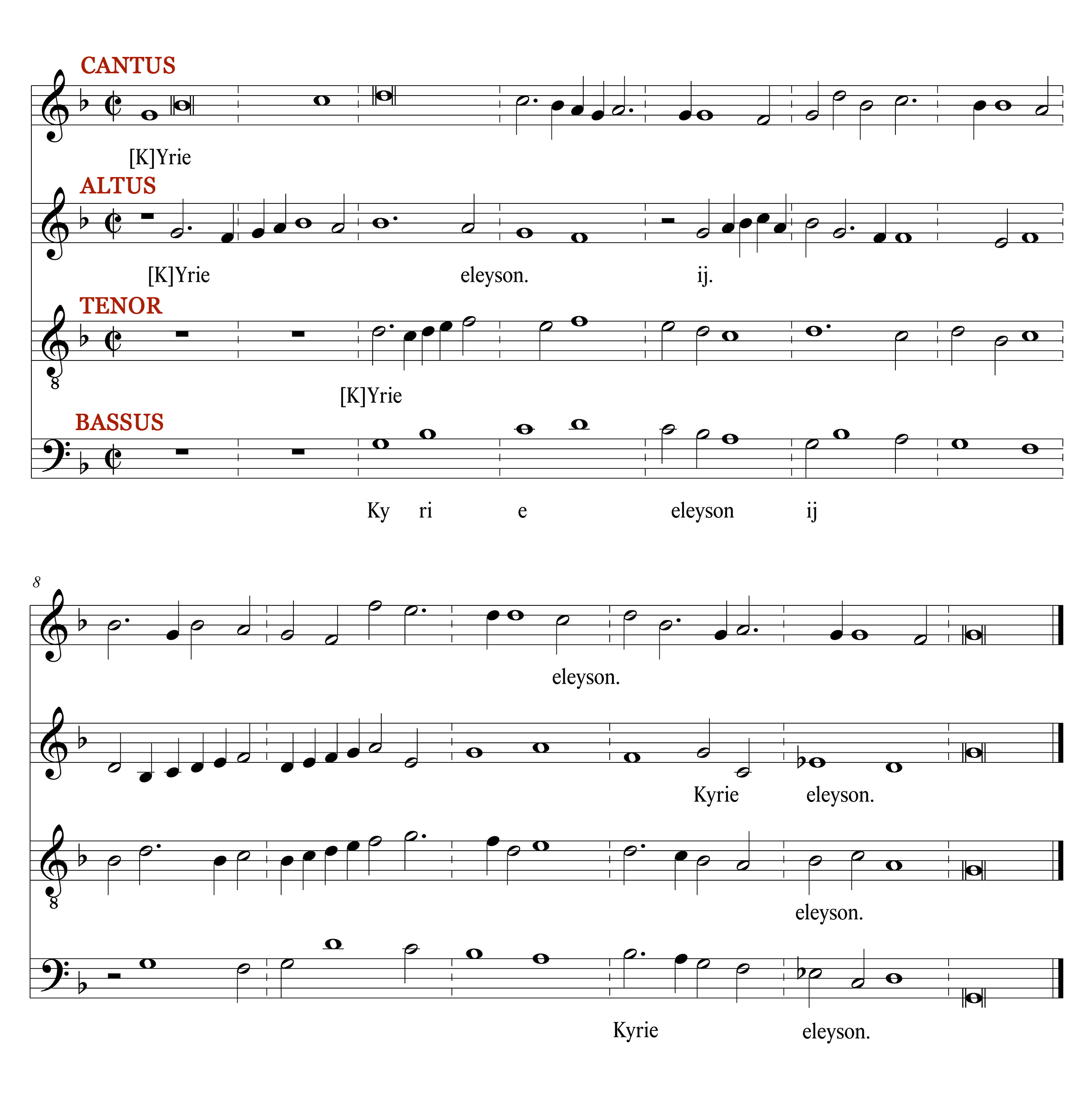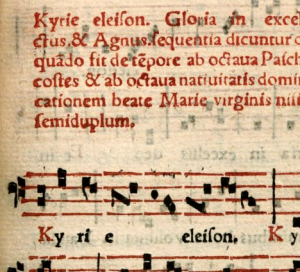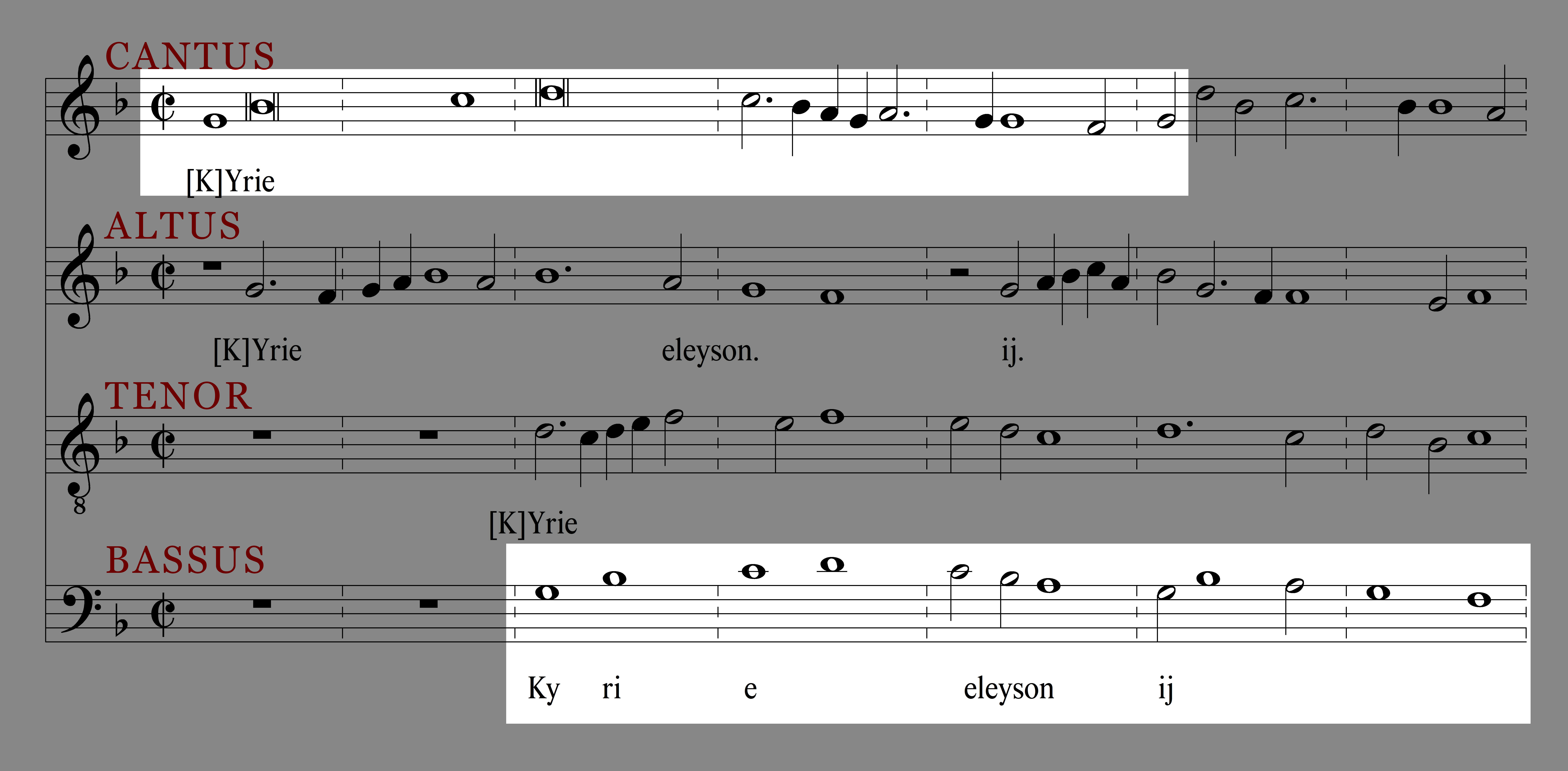The largest and most eye-catching printed element on the opening pages of music in the John J. Burns Library’s copy of Morales’s Missarum liber primus is the lavish initial “K” at the top of the left-hand page (Figures 1a and 1b). While it does serve a practical purpose as the first letter of the sung text, its main functions are both decorative and symbolic. The letter shape itself has been morphed decoratively into an heraldic lion: the letter’s lower right extender formed out of its tail and an unnaturally elongated right forepaw.
Between the lower extenders of the “K”, there is a small vignette of the virgin Mary and the infant Jesus, a symbolic reference to the title of the mass whose opening music is printed beside it—Morales’s Missa de Beata Virgine (mass of the Blessed Virgin Mary).
This large letter “K” was printed from a hand-carved woodblock, as were both the seven smaller initials “K” and “C”, and the decorative border on the left-hand page.
Originally, the border created a complete frame for the left page; however, at some later date, the bottom left corner of the Burns Library copy was torn off, and the page was much later expertly repaired by conservators with an insert of blank paper.
Although the larger decorative elements were all printed from carved woodblocks, the smaller musical notation and the verbal sung text were printed from metal type; the individual finely cast elements are similar to those shown in Figure 2. On close inspection of the first staff of printed music, small breaks in the horizontal lines become visible. These are the result of miniscule gaps between the pieces of metal type. Individual pieces of type include not only the note (or other musical symbol) itself, but also the five staff lines on which it sits. Occasionally, smaller lengths of the staff lines only (without notes or other symbols) are inserted to space the music more evenly. All this can be seen even more clearly in Figures 3a and 3b, in which the various elements have been artificially separated.
- Figure 2
- Figure 3a
- Figure 3b
Both elements—woodblocks and music type—are arranged in a printing frame that presents, as shown here, a cut-away mirror image of the final printed page.
In the printing press, only the uppermost surfaces of the type and woodblocks transfer black ink to the paper, while the grooves and cutaway areas leave the paper untouched and blank. Once the music has been printed, and bound into a book, it is ready to be sung. The following images show the first staff of music in the printed notation of 1546, and, below it, the same passage transcribed into modern notation.
Scoring up
The music in the upper left half of the page is sung by the cantus (or soprano, superius, or highest) voice. On the double page spread (‘opening’) of the finished bound book, the cantus and the music of the three other voices—altus, tenor, and bassus—is printed in their respective dedicated quadrants. Each voice begins at the top left of its quadrant, and sings down to the bottom right (Figure 4).
The following video, recorded in the Burns Library, shows four singers from the Ensemble Plus Ultra singing the opening Kyrie from Morales’s Missa de Beata Virgine from the John J. Burns Library copy. A transcription of this Kyrie into modern notation appears below the video.
Upon a plainsong…
Morales based all the movements of this polyphonic mass on the corresponding melodies of the plainsong mass of the Blessed Virgin. In this case of Morales’s opening Kyrie, the soprano and bass voices sing only slightly altered, or paraphrased, versions of the original plainsong melody.
Two printed sources of the plainsong melody of the mass of the Blessed Virgin are shown below in Figures 5 and 6; the first is Spanish, and the second French, printed by the same craftsman, Jacques Moderne of Lyon, who printed the John J. Burns Library’s Morales choirbook. These two can be compared with the illustration below that shows the opening of Morales’s Kyrie. Passages in which both the cantus (soprano) and bass voices paraphrase the plainsong melody are highlighted.
- Figure 5
- Figure 6

